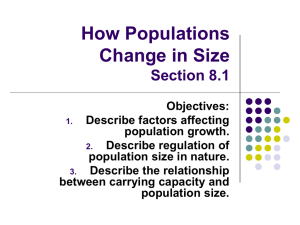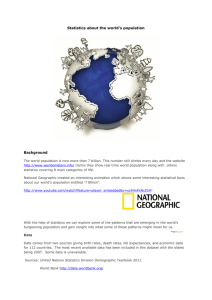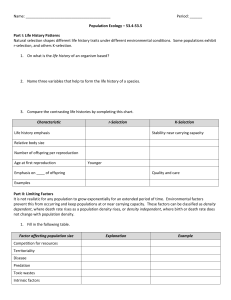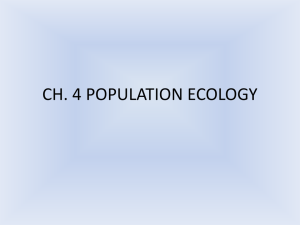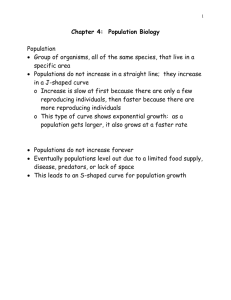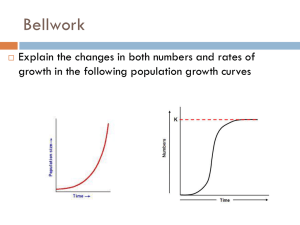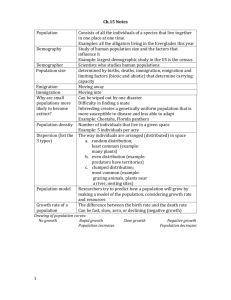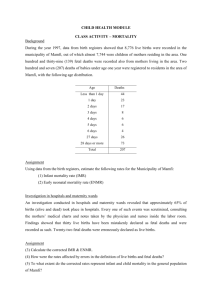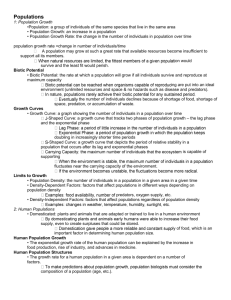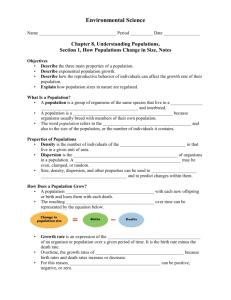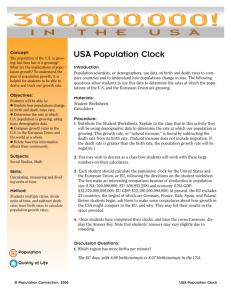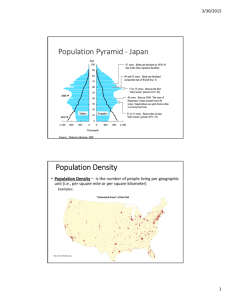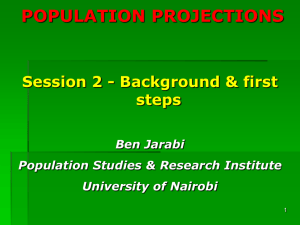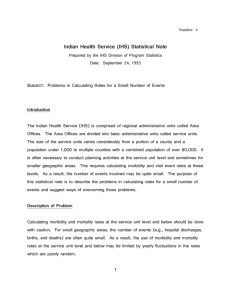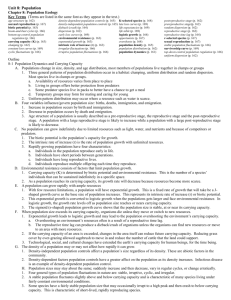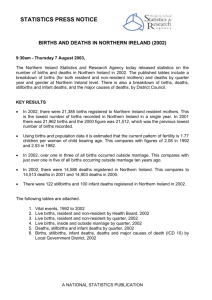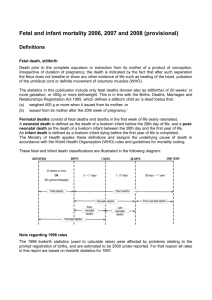2 – Mathematical Modelling of Population Growth.DOC
advertisement
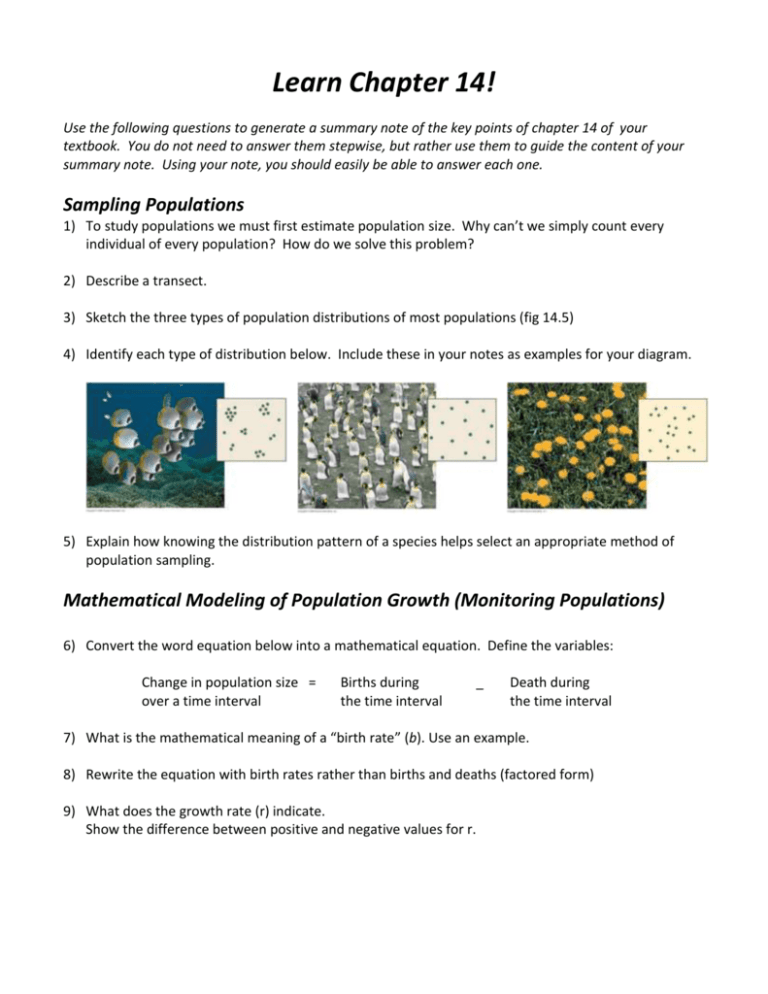
Learn Chapter 14! Use the following questions to generate a summary note of the key points of chapter 14 of your textbook. You do not need to answer them stepwise, but rather use them to guide the content of your summary note. Using your note, you should easily be able to answer each one. Sampling Populations 1) To study populations we must first estimate population size. Why can’t we simply count every individual of every population? How do we solve this problem? 2) Describe a transect. 3) Sketch the three types of population distributions of most populations (fig 14.5) 4) Identify each type of distribution below. Include these in your notes as examples for your diagram. 5) Explain how knowing the distribution pattern of a species helps select an appropriate method of population sampling. Mathematical Modeling of Population Growth (Monitoring Populations) 6) Convert the word equation below into a mathematical equation. Define the variables: Change in population size = over a time interval Births during the time interval _ Death during the time interval 7) What is the mathematical meaning of a “birth rate” (b). Use an example. 8) Rewrite the equation with birth rates rather than births and deaths (factored form) 9) What does the growth rate (r) indicate. Show the difference between positive and negative values for r. 10) If in one year for every for every 1000 individuals there were (a) 50 births and 20 deaths, calculate r. (b) 40 births and 30 deaths, calculate r. (c) 30 births and 35 deaths, calculate r. 11) For each of these scenarios in question 10 calculate the change in population size in 3 years if the starting population was 2500 individuals. 12) When organisms approach their biotic potential, what type of growth curve represents their growth pattern? Sketch a graph to represent this type of growth. 13) How does this growth curve change if resources are limited? Are resources ever unlimited? (think Easter Island) 14) When do species show this type of growth? 15) Define carrying capacity (with its variable) 16) Add and explain the slowing factor to the equation for change in population size over time. Your explanation should include the following: What happens to the slowing factor mathematically if the population size is: (a) Very much lower than carrying capacity (b) Approaching carrying capacity (c) Above carrying capacity (is this possible?) 17) Illustrate what must happen to all J-Shaped curves when they approach carrying capacity by drawing the S-shaped curve into your notes. Label it “Logistic Growth”. | 18) Think about the human population… What type of growth curve do you think represents our population? Where do you think we are on our growth curve? 19) What happened to the introduced caribou in St. Paul Alaska? 20) Sketch a graph depicting the three survivorship curves (Type I, Type II and Type III) 21) Distinguish between r-selection and K-selection. (a) Compare the frequency of disturbance of the habitat that favours each strategy (b) Use dandelions as an example of an r-selection strategist and maple trees as an example of Kselection strategists.
